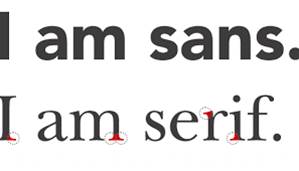Audience: Effects theory
Audience theory: key notes and terminology
Passive & Active
Passive: This is the view that audiences passively take in information from the media and that these messages have the same effect on everyone.
Active: This is the more modern and generally accepted view that audiences interact with and make conscious choices regarding the media they consume.
Hypodermic Needle Theory
This is the suggestion that audiences are always passive and therefore take the intended message from the producer as if it was injected into their minds. This assumes no individual difference in audience members.
Two-step flow theory
This is the theory that consumers form their opinions based on opinion leaders like newspapers, politicians and, nowadays, celebrities.
Uses and Gratifications - Blumler & Katz
INFORMATION/SURVEILLANCE: learning information that you did not already know or that is useful for living (e.g. documentaries; weather or traffic).
IDENTITY: personally relating to something - seeing your lifestyle on screen.
DIVERSION/ENTERTAINMENT: escapism and being entertained away from your normal life.
RELATIONSHIPS: social interaction, caring about characters or celebrities, forming relationships e.g watching a soap opera for a long time because you care about what happens to long-standing characters.
The 3 Vs
VISCERAL PLEASURE: Physical thrill of watching something e.g hairs on the back of your neck in a horror film, sport, big explosions.
VICARIOUS PLEASURE: Experiencing something through the characters.
VOYEURISTIC PLEASURE: Watching people e.g hidden camera shows / elements of reality TV like Big Brother.
Audience effects theory: blog tasks
Create a new blogpost called ‘Audience Effects Theory’ and complete the following tasks:
1) Write a definition of a passive audience: The audience passively takes in the information and the message has the same effect on everyone.
2) Write a definition of an active audience: The audience interacts with the media and makes conscious decisions based off of personal values and opinions .
3) Write a definition of the hypodermic needle theory: The theory that all audiences are passive and take the producer's intended message.
4) Write down a media product (e.g. TV show, newspaper or videogame) for each category of Blumler and Katz's Uses and Gratifications theory and WHY it fits that particular audience use/gratification. The first one is done for you:
INFORMATION/SURVEILLANCE: Media text - The Times newspaper
> Why: It tells audiences important information about politics, the world and more.
PERSONAL IDENTITY:
> Why: Relates to a person's views and opinions on the subject given their lifestyle.
> Why: Relates to a person's views and opinions on the subject given their lifestyle.
DIVERSION/ENTERTAINMENT:
> Why: Offers outside sophisticated knowledge that stimulates the consumer.
> Why: Offers outside sophisticated knowledge that stimulates the consumer.
RELATIONSHIPS:
> Why: provides information that will effect their personal social life or how they view a certain outside entity.
> Why: provides information that will effect their personal social life or how they view a certain outside entity.
5) Re-watch the clip from Blue Planet above and write a paragraph analysing how elements of the clip offer the audience pleasures or gratifications (use media terminology from Uses and Gratifications theory and the 3 Vs - notes outlined above).
Narration provides context on what is happening and appeals to audiences by informing them. The visual stimuli allows for surveillance and escapism/entertainment as the audience immerses itself in what is happening on screen. There is voyeuristic pleasure there as the camera provides an intimate third person view of the environment and how the animals are interacting with it, not only that but a visceral pleasure when the animals hunt and there are suddenly stakes applied to the situation.
Grade 8/9 extension tasks
To take this further, select a media text of your own choice, embed it in your blog and write another detailed paragraph analysing the audience pleasures in that product.
Finally, think about the hypodermic needle theory. Do you think most audiences believe everything they see in the media? Why? Explain your answer and try to argue both sides.
I don't believe most audiences think everything they see in media is real, everyone has their own personal views and sources of information which helps them decide for themselves if the information that they're being fed is the truth or not. However, it can be also argued that they take the information for what it is and simply form opinions around it, neither being able to properly disprove or confirm.


Comments
Post a Comment